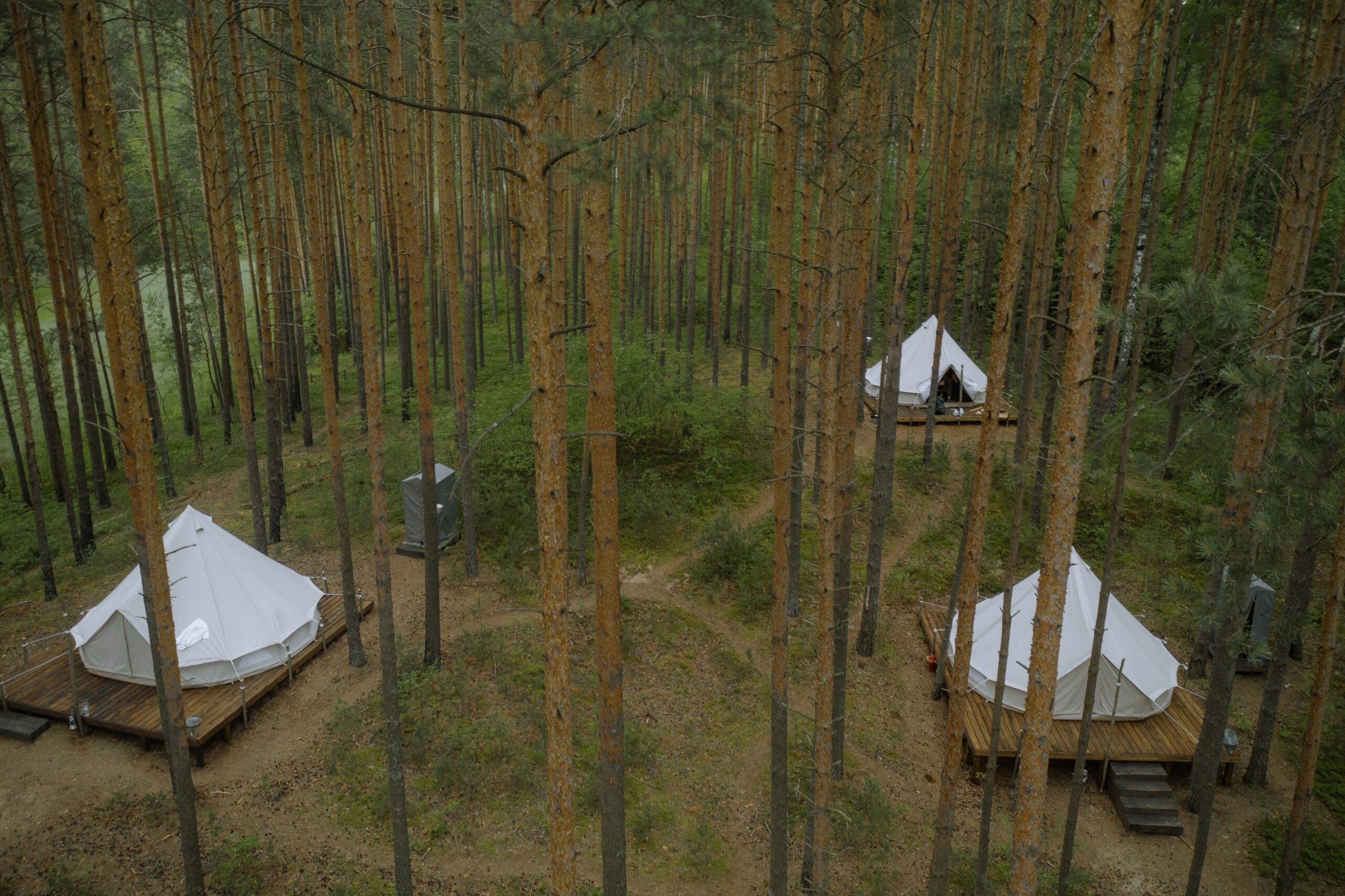You’re contemplating buying a piece of land–perhaps you want it for a personal getaway or perhaps you want to build–either way, a strong foundation gives you many options. Once you have a platform, you can put up a glamping site, a mobile home or even a tiny home on it. A strong foundation is key to the rest of the fun. Below are some steps to get you started:
Building a wooden platform for a small mobile home, tent or glamping site typically involves several steps. Here’s a general outline of the process:
1. Obtain necessary permits:
Check with your local building department to determine if any permits or approvals are required for constructing a mobile home platform. Adhere to any regulations and obtain the necessary permits before starting the construction process. Usually this step should not be complex.
2. Plan and design:
Measure the dimensions of your mobile home or what you wish to construct or place on it to determine the size of the platform you’ll need. Sketch out a design that includes the layout, dimensions, and support structure of the platform. Consider factors such as leveling the ground, slope, and drainage to ensure a stable and durable foundation.
3. Gather materials and tools:
Prepare a list of materials needed for the project, such as pressure-treated lumber (Home Depo, Lowe’s or local stores), concrete blocks or posts, galvanized screws or nails (screws are better incase you need to take it out for adjustments), gravel or crushed stone, and tools like a circular saw, drill, level, measuring tape, and a shovel. Purchase or gather all the necessary supplies. If you need some tools to get you started, here’s out list and where you can order them online:
4. Prepare the site:
Clear the area where the platform will be built. Remove any vegetation, rocks, or debris. Level the ground using a shovel or a rented ground leveling tool to ensure a stable and even surface. It doesn’t have to be perfect.
5. Install a support structure:
Begin by installing the support structure for the platform. This may involve placing concrete blocks or posts as footings at specific intervals to provide stability. Use a level to ensure that the supports are level and adjust as necessary. The number and spacing of the supports will depend on the size and weight of the mobile home or what your DIY project.
Better might be to dig! You can dig four square holes that are deep enough maybe 12-18 inches. They will strengthen and support the platform.
6. Frame the platform:
Cut and assemble the pressure-treated lumber according to your design. Create a perimeter frame that will rest on the support structure. Use galvanized screws or nails to secure the frame together. Ensure the frame is square and level.
7. Install cross beams and joists:
Install cross beams and joists within the frame, spacing them according to the design. These will provide additional support for the platform. Secure them to the frame using screws or nails.
8. Add decking boards:
Attach the decking boards to the top of the platform frame, ensuring they are evenly spaced and aligned. Leave a small gap between the boards to allow for expansion and contraction. Use galvanized screws or nails to secure the decking boards to the frame and joists.
9. Check for levelness:
Use a level to ensure the platform is level in all directions. Make any necessary adjustments by adding or removing material under the supports.
10. Finishing touches:
Trim any excess decking boards and sand any rough edges. Apply a weather-resistant sealant or stain to protect the wood from moisture, UV rays, and other elements. Follow the manufacturer’s instructions for the chosen product.
Of course, this is a general outline and specific steps may vary depending on the design, size, and requirements. However, it is quite doable for the adventurous and industrious-minded.



